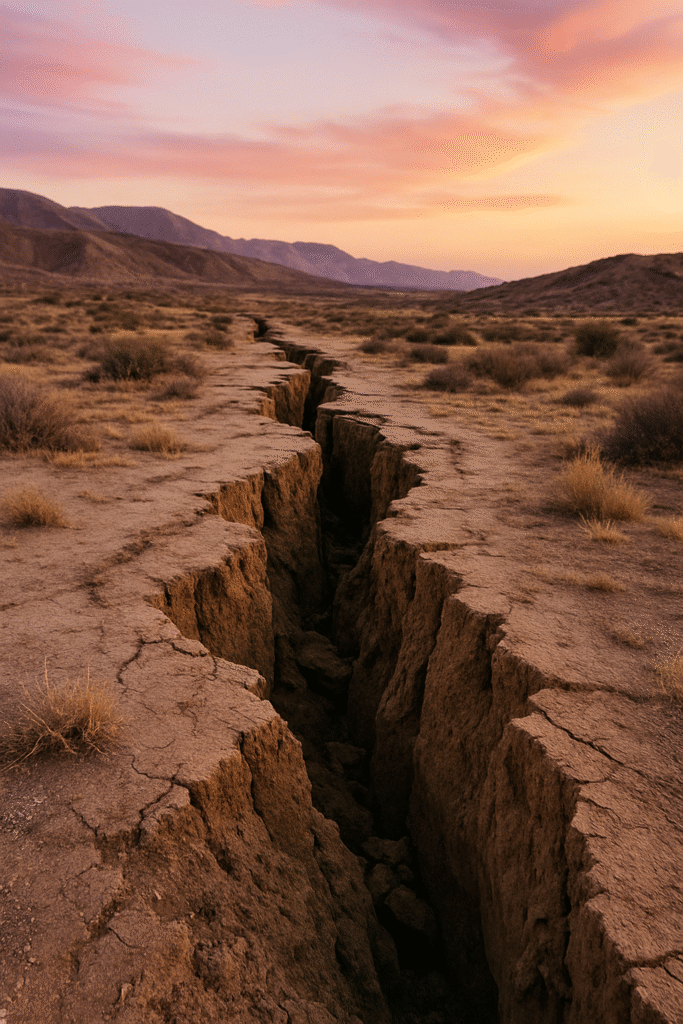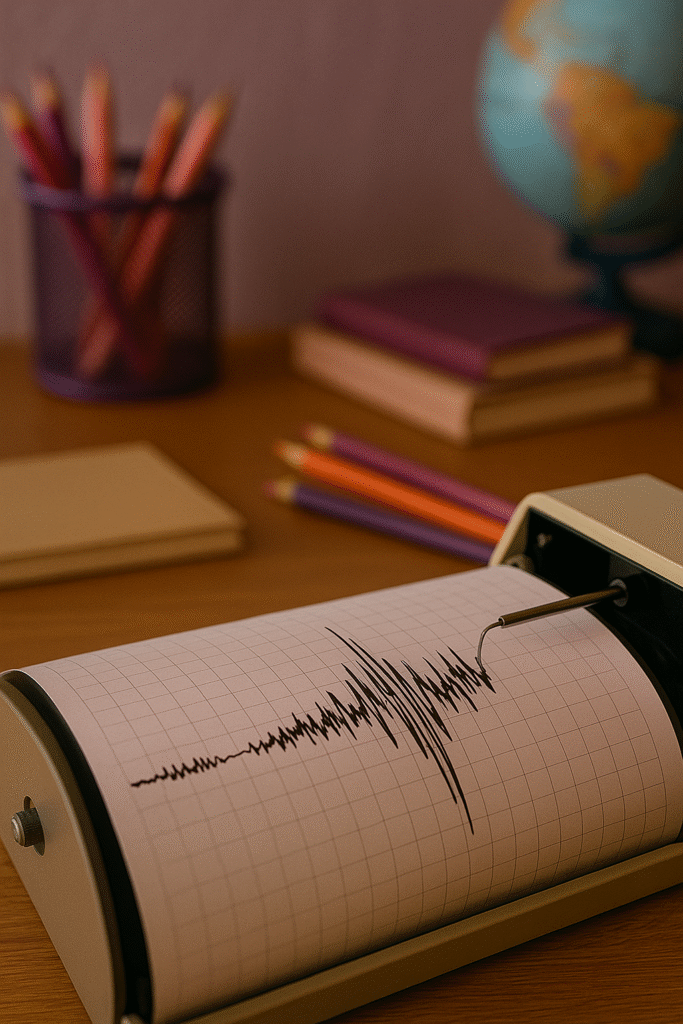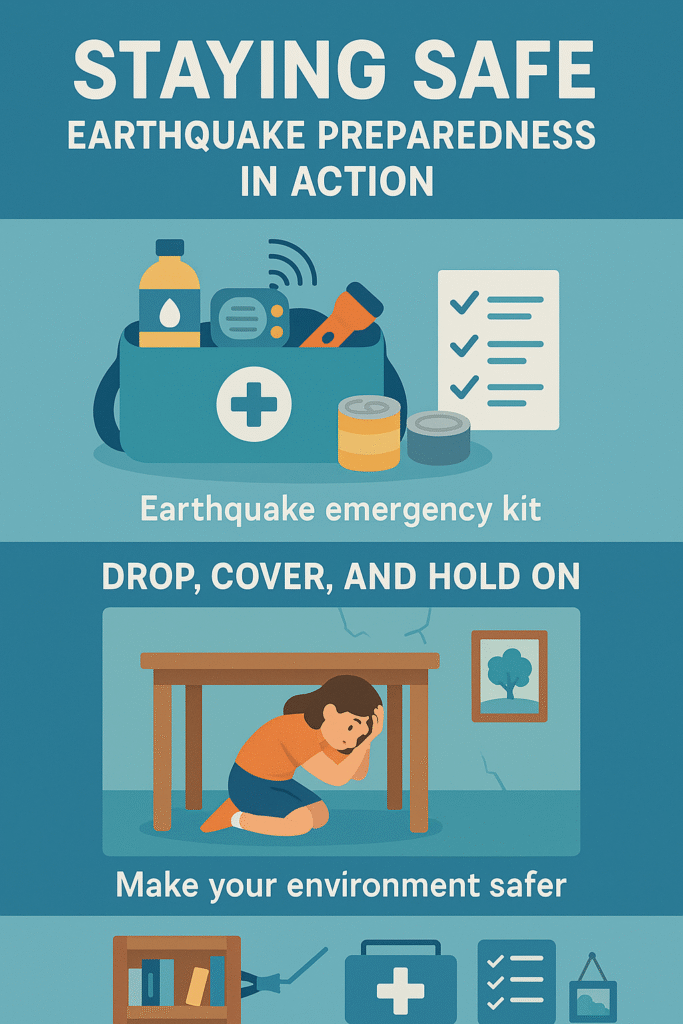
Shaken Minds: Understanding Earthquakes with Empowered Awareness
What Causes Earthquakes? A Natural Phenomenon Explained
Understanding the mechanics behind earthquakes is essential for grasping their impact on our world. Earthquakes occur due to sudden movements within the Earth’s crust, primarily along faults where tectonic plates meet. These plates, massive slabs of rock that make up Earth’s outer shell, are constantly shifting, albeit slowly. Over time, stress accumulates at their boundaries. When this stress exceeds the friction holding them together, it is released in a burst of energy that travels through the ground as seismic waves — this is what we experience as an earthquake.
The Earth is divided into several tectonic plates that float atop the semi-fluid asthenosphere. These plates interact in three key ways: converging (colliding), diverging (moving apart) or sliding past each other (transform boundaries). Each type of interaction can cause earthquakes, but transform and convergent boundaries are particularly active. For example, the San Andreas Fault in California is a transform boundary known for its seismic activity, while the devastating 2004 Indian Ocean earthquake was caused by the subduction of one plate beneath another.
It’s important to note that earthquakes don’t just happen at plate boundaries. Intraplate earthquakes occur within a plate’s interior and, although less frequent, can still be powerful. The magnitude of an earthquake, measured on the Richter scale, reflects the energy released at its source, while intensity, often gauged using the Mercalli scale, describes its effects on people, structures and the environment.
Another fascinating aspect of earthquake science is the concept of aftershocks and foreshocks. After a major quake, smaller tremors may follow as the crust adjusts to the changes in stress distribution. Occasionally, a minor quake may precede a larger event — these are known as foreshocks. However, predicting when and where an earthquake will occur remains one of science’s great challenges.
Understanding these natural processes lays the groundwork for more informed and resilient communities. Educational initiatives like those by Janie’s Balanced Path aim to demystify natural disasters, ensuring that young learners grasp both the science and the safety measures surrounding such events. By learning what drives these powerful earth movements, we can better prepare for their consequences and foster a sense of natural disaster awareness that extends beyond the classroom.
The Layers Beneath – A Journey Into Earth’s Structure
To truly grasp the dynamics of earthquake education, one must venture below the Earth’s surface and explore its layered anatomy. The planet’s internal structure plays a pivotal role in tectonic activity, influencing where and why earthquakes occur. Earth is composed of four main layers: the crust, the mantle, the outer core and the inner core. Each layer contributes uniquely to the planet’s seismic behaviour, with the crust and upper mantle being the most directly involved in earthquake activity.
The crust, Earth’s outermost layer, is relatively thin and divided into two types: continental and oceanic. It’s this layer that houses all life, and where tectonic plates are found. The mantle beneath is a thick, semi-solid rock layer that behaves plastically over long periods. It is this plasticity that allows tectonic plates to slowly move. Convection currents in the mantle, driven by heat from the core, are responsible for this motion, fuelling the continuous reshaping of Earth’s surface.
Deeper still, the outer core is a liquid layer composed mainly of iron and nickel. It generates Earth’s magnetic field through its flowing movement. At the centre lies the inner core, a solid sphere of iron and nickel that remains solid due to immense pressure despite the extreme heat. While the core itself is not directly involved in earthquakes, the heat it produces is vital for driving the mantle’s convection currents.
This constant motion beneath our feet results in the build-up and eventual release of energy — the essence of earthquakes. Earthquakes usually occur in the lithosphere, a rigid outer layer that includes the crust and the uppermost part of the mantle. When stress overcomes the friction holding rocks together, they snap, releasing energy in waves that travel through the Earth.
By educating learners on these foundational layers, we enhance their comprehension of why and how the ground can suddenly shift beneath us. Integrating this earth science into lessons allows for a tactile, imaginative approach to learning. At Janie’s Balanced Path, we believe that exploring beneath the surface — both literally and figuratively — empowers students with a deepened awareness of natural disaster phenomena and their global significance.


Tools of the Trade – Measuring and Monitoring Earthquakes
To build a robust understanding of earthquake science, it’s vital to explore the tools used to detect, record and analyse seismic events. These instruments not only enable scientists to study tectonic activity but also help communities prepare for potential disasters. Among the most iconic devices is the seismograph, a tool that records the vibrations of the Earth onto a medium such as paper or a digital interface. The recorded data, called a seismogram, displays wave patterns that provide insight into an earthquake’s strength, duration and location.
Seismographs function by suspending a mass above a base anchored to the ground. When an earthquake strikes, the base moves with the ground, while the suspended mass remains relatively still. The relative motion is captured and translated into visual data. Modern seismographs are highly sensitive, capable of detecting even minor tremors, and are often connected in networks to provide broader geographic coverage. These networks feed data into central repositories, allowing real-time monitoring across regions prone to tectonic activity.
Beyond measuring the shaking itself, geologists also use GPS and satellite technology to monitor ground deformation over time. This is particularly useful in areas where stress is building silently, indicating the possibility of future earthquakes. Instruments such as strainmeters, tiltmeters and laser ranging systems add to this toolkit, providing further ways to detect changes in Earth’s crust.
One of the most transformative advances in recent years is the integration of data analytics and artificial intelligence into earthquake science. By analysing vast quantities of seismic data, algorithms can detect patterns, identify anomalies and even suggest areas of concern. While true prediction remains elusive, early warning systems are proving increasingly effective. Countries like Japan and Mexico have implemented alert networks that detect primary (P) waves — the fastest seismic waves — and send out warnings before more damaging secondary (S) waves arrive.
By educating learners on these scientific methods and technologies, we not only demystify earthquakes but also foster appreciation for the human ingenuity working tirelessly to understand them. At Janie’s Balanced Path, we encourage hands-on learning with models of seismographs and simulations of seismic activity, enabling young minds to grasp both the gravity and fascination of natural disaster awareness and earthquake education.
Staying Safe – Earthquake Preparedness in Action
When discussing earthquake education, understanding how to stay safe is just as crucial as understanding the science. Earthquake preparedness involves practical steps and planning that can significantly reduce injury and damage when a quake strikes. For both schools and families, knowing what to do before, during and after an earthquake builds confidence and can save lives.
One of the first steps in preparedness is assembling an earthquake emergency kit. This should include essentials such as bottled water, non-perishable food, a torch with extra batteries, a whistle, a basic first aid kit and any necessary medications. It’s also wise to include copies of important documents, a mobile phone charger and a list of emergency contacts. For children, small comfort items like a toy or a colouring book can help reduce stress.
In schools and public institutions, regular earthquake drills are vital. The “Drop, Cover and Hold On” method is a global standard: drop to the ground to prevent being knocked over, take cover under a sturdy table or desk to protect from falling debris and hold on until the shaking stops. Educators should review evacuation routes and identify safe zones both indoors and outdoors, such as away from windows, tall bookshelves or hanging objects.
Homes and classrooms can be made safer by securing heavy furniture to walls, placing breakables in lower cupboards and ensuring emergency exits are accessible. Structural retrofitting for older buildings, especially in high-risk zones, can vastly improve safety during seismic activity. Parents and teachers can involve children in the process, turning it into an empowering and engaging learning activity.
Another key aspect is emotional preparedness. Earthquakes can be frightening, particularly for young people. Discussing them openly, explaining that they are natural and teaching calm, constructive responses can help demystify fear. Resources like storybooks, games and interactive apps can turn a potentially scary topic into one of curiosity and resilience.
At Janie’s Balanced Path, our approach to earthquake education includes a holistic view of safety. We encourage learners not only to understand the shaking ground but also to feel grounded in their ability to respond wisely. By fostering both knowledge and preparedness, we help build communities that are not only informed but also empowered in the face of natural disasters.

Earthquakes in Society – The Ripple Effects Beyond the Epicentre
While the ground-shaking drama of an earthquake captures immediate attention, its influence ripples far beyond the initial tremor. Earthquakes can have profound societal, economic and emotional impacts, especially in vulnerable communities. By understanding these broader effects, learners can develop a more compassionate and holistic view of natural disasters and their aftermath.
When an earthquake strikes a populated area, the most visible consequence is structural damage. Buildings, roads, bridges and utilities can all be affected, sometimes catastrophically. In developing regions, poor infrastructure exacerbates these outcomes, highlighting the importance of engineering and urban planning. Educational programmes that include earthquake-resistant design principles help students appreciate how science and safety intersect in real-world applications.
The economic impact can be staggering. Earthquakes disrupt trade, halt production and demand enormous resources for recovery and rebuilding. In agriculture-based regions, landslides and soil displacement can destroy crops, affecting food security. For young learners, exploring how communities manage these challenges can encourage critical thinking about resource management, equity and global cooperation.
Emotionally, the trauma of experiencing an earthquake — or even learning about one — can be significant. Survivors often face long-term psychological effects, including anxiety and PTSD. Empathy becomes an essential part of earthquake education, encouraging students to consider the human stories behind the headlines. Through discussions, storytelling and age-appropriate documentaries, learners can engage with these experiences meaningfully and respectfully.
On a more optimistic note, earthquakes can also unite communities. Relief efforts, both local and international, often showcase remarkable compassion and resilience. From volunteers distributing supplies to neighbours helping each other clear debris, these moments teach the value of solidarity and shared humanity. At Janie’s Balanced Path, we believe these are just as important as tectonic theory when teaching about earthquakes.
Incorporating earthquake education into a broader social context allows students to see connections between science, society and their own roles within it. Whether they dream of becoming geologists, architects, aid workers or policymakers, understanding the ripple effects of seismic activity empowers them to contribute thoughtfully and effectively. Through the lens of earthquake education, young minds not only grasp natural disaster awareness but also the significance of preparedness, empathy and innovation in a rapidly changing world.


You May Also Like

Tremor Legends: Unfolding the Stories of Earth’s Most Famous Quakes

Eruptive Wonders: The Power and Mystery of Volcanoes

